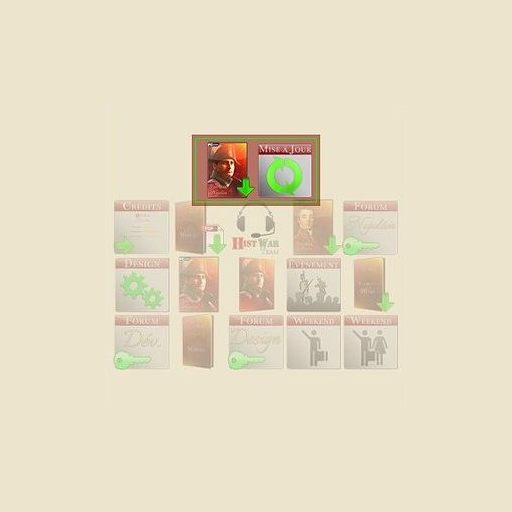HistWar: LGdN
HistWar: Les Grognards is a tactical game based on the Napoleonic Wars. The battle simulator puts you at the centre of your army and in the position of commander-in-chief.
Enjoy a unique experience. Far from the fighting, build up your army and define your doctrine. Now you are on the battlefield. With a few brief orders, you position your troops and then you think up your tactical plan, which you quickly communicate to your superiors, marshals and other generals.
The battle commences; the aides-de-camp and messengers from your regiments sent out on reconnaissance bring back the first dispatches.
Alone, your gaze fixed on the centre of the battle, you see your troops, morale high, advancing in close ranks, superb as if on parade. Smoke, dust and fog sometimes obscure the horizon. The cannons thunder in the distance. It is time to order the Guard to advance in order to definitively break through the enemy line. The staff map is now before your eyes. With a quick, precise gesture, you indicate where the final effort must be made to break your opponent's will. Your manoeuvre has succeeded.
The Marshals have joined you to analyse the numerous reports that are arriving: tactical and strategic victory, they proclaim without any flattery. Your mark will remain forever on this battlefield...

GAME FEATURES
- Simulator of Napoleonic battles between 1805 and 1814.
- Three artificial intelligence engines to better model the chain of command and the fighting of the early 19th century.
- Precise and deterministic modelling of combat taking into account numerous parameters such as the relative position and orientation of the protagonists, the density and formation of the regiments, their quality, their value and also their morale and fatigue.
- Elaborate modelling of morale, taking into account a large number of factors such as the presence and type of friendly units, the proximity of the commander, the effects of the weather, the level of immediate or accumulated losses, and the possession of lines of operation.
- Historical battles with 50,000 animated 3D models in each camp representing up to 500,000 infantrymen, cavalrymen or artillerymen, and several hundred cannons deployed.
- 10 historical battles: Haslach, Austerlitz, Eylau, Friedland, the Regensburg Campaign, Wagram, the Battle of the Moscova (Borodino), Berezina, Hanau and La Rothiere, with the option to modify or create new battles using the game editors.
- The presence of 15 military powers including France, Russia, Austria, Württemberg, Saxony, Poland, Italy and Naples, as well as foreign units (Irish, Portuguese, Swiss, Croatian, etc.).
- More than 1,150 historical regiments, more than 4,000 commanders, more than 550 uniforms, representing a complete database of the armed forces of the time.
- Three publishers of maps, orders of battle and doctrines, allowing you to define your own battles, create your own armies and doctrines, and even modify the distinctive colours of certain regiments.
- Units organised according to the historical principles of army composition: Army Corps, Division, Brigade, Regiment, Battalion, Artillery Company.
- Army of up to 100 operational units divided into more than 10 corps or divisions... in order to reconstruct the real armies of the period.
- Three game modes: solo against the AI, multiplayer for up to eight players, or two players via email.
- Simulation speed varies between one and ten, from six seconds per historical minute to one minute per minute. Each email game round lasts 15 minutes.
- Wide variety of troops including sappers, grenadiers, fusiliers, chasseurs, grentz, old, middle or young imperial guard, royal guard, cuirassiers, gendarmes à cheval, carabinieri, lancers, dragoons, mamelukes, hussars, cossacks and chasseurs à cheval.
- Wide variety of 3D models: colonel, battalion or squadron leader, captain, trumpeter or drummer, standard bearer.
- 4 types of maps, from 24 km² to 660 km² in order to simulate all the battles of the Empire, or even to simulate operational engagements such as most of the 5-day campaign around Regensburg.
- Taking into account the weather (rain, fog, snow) which modifies the conditions of movement and combat. Smoke also plays a role, forcing the artillery to take breaks when visibility becomes poor.
- Several modes of vision including a 3D view of the real world, a subjective view, a symbolic vision to better understand the evolution of the fighting, and a staff map.
- And several more
Ma boutique
Brigadier General
Partager

